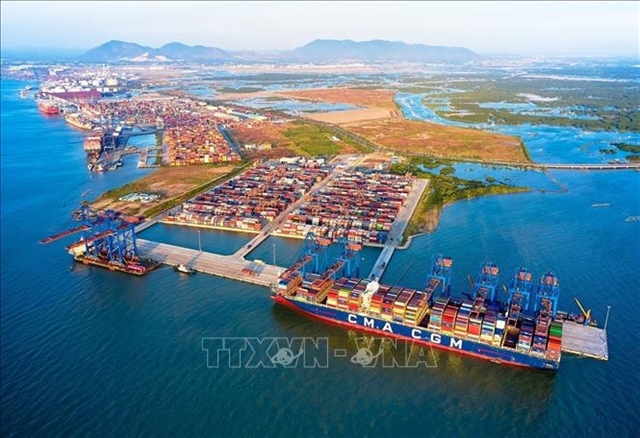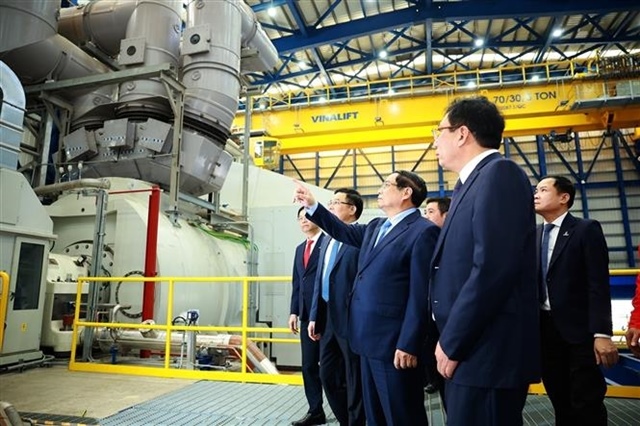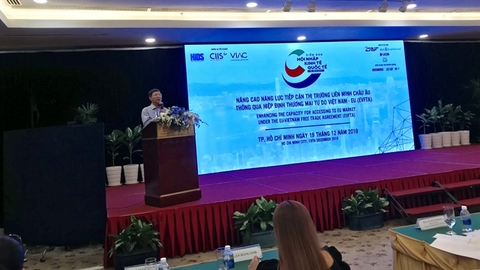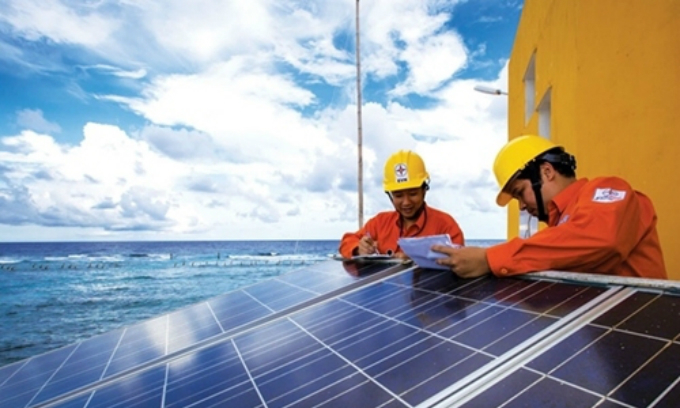A solution for solar power development
A solution for solar power development
Vietnam has offered a very high price for solar power to attract investment in this energy segment, but the country now has to recalculate the pricing to ensure sustainable development for this renewable energy.
With Decision 11/2017/QD-TTg, the Government set out a mechanism to encourage solar power development projects as of 2017. Under the revised Power Master Plan VII approved by the Government, the solar power capacity will reach 800-850MW by 2020, but the solar power market has quickly fallen into disarray. In 2018, only three solar power plants were successfully connected to the power grid. In the first quarter of this year, five more plants were added, but the number surged between April and June. By June 30, 2019, the National Load Dispatch Center had connected more than 80 solar power plants with total capacity of 4,464MW to the power grid.
Attracted by the purchase price of 9.35 U.S. cents per kWh, many enterprises have made massive investment in solar power development, mainly in Ninh Thuan and Binh Thuan provinces, resulting in the power grid overload. Investors had predicted this scenario before construction of solar power plants. However, they still pursued the projects to get them connected to the power grid before June 30, 2019 to enjoy the high power purchase price offered in Decision 11.
Meanwhile, investment for the power transmission system cannot catch up with the boom in solar power development. To Van Dan, head of the Investment Management Board under Vietnam Electricity Group’s National Power Transmission Corporation (EVNNPT), said to release the capacity of renewable energy sources in Ninh Thuan and Binh Thuan, the corporation would develop 12 power transmission lines, of which six are already planned and six are not yet planned. However, it would be hard to ensure early completion of power transmission, as it takes between three and five years to develop the transmission network while a solar power plant can be built within only three to six months.
In dilemma
There are two plans under consideration for the solar power market. The first plan is to continue offering the power purchase price for phase two. Subsequently, the purchase price for onshore solar power is proposed at 7.09 U.S. cents per kWh, down nearly 25% versus the price for solar power projects completed before June 30, 2019. The price for floating solar power is suggested at 7.69 U.S. cents per kWh, down nearly 18%. The price for rooftop solar power is kept at 9.35 U.S. cents per kWh. However, investors said these prices would not encourage investment in solar power projects in the central and the northern regions, which have lower solar radiation than the southern region. Meanwhile, construction of more solar power plants in the southern region will also be unfeasible, as the development of the transmission system cannot move in tandem.
The second plan is to hold bidding during the current phase. The Ministry of Industry and Trade said it had cooperated with the World Bank and the Asian Development Bank to study a bidding mechanism. There are two plans for bidding. One is bidding at the transformer station. If the station is able to transmit the capacity onto the power grid, the bidding can be extended to projects in surrounding areas. The other is to complete site clearance and then invite bidders for part or the whole solar power project.
Dr. Doan Van Binh, director of the Energy Science Institute, said if the cost of project development, the expense for site clearance and the capital cost of 10-11% per year are included, the bidding price will be over 6 U.S. cents per kWh, lower than the price of 7.09 U.S. cents per kWh under the prepared plan. However, in the face of power shortage in 2021-2023, bidding will lengthen the time of projects and so will not ensure enough power supply for the next phase.
So, the solar power market is in a dilemma. If the fixed price is continued to be applied as planned, it will not be attractive enough to encourage investment in solar power projects in the northern and the central regions. Meanwhile, the country will face the danger of power shortage in the near future if bidding is applied.
Solution for short term
Investment in power transmission development remains the fundamental solution for the solar power market. The market reality shows that power generation sources can be added in no time while it takes more time for power transmission development. The proposal to build transmission lines by a number of enterprises is a positive move which shows that the private sector can completely participate in power transmission, a segment currently under the monopoly of EVN.
In the short term, the application of bidding at the present time is hardly feasible, as it requires much time for preparation for many phases, such as pilot application, site clearance and infrastructure readiness. So, the plan to offer the fixed price for the second phase is still the most feasible. The gradual reduction of power purchase prices is also a solution applied by many countries during the “transition” to the bidding application.
Though the one-price plan as suggested is simple, as it offers only one price and no further support for areas with low radiation, the plan does not encourage solar power development in the northern and the central regions to ease overload for the power grid. Therefore, the most feasible solution is to offer different prices for different areas, with higher privileges for areas with low radiation and lower privileges for areas with high radiation, thereby to attract investment in solar power projects in the northern and the central regions. This solution will push up power prices; so EVN will have to recalculate power pricing towards reduction of subsidy for industry instead of putting the burden on consumers.




















